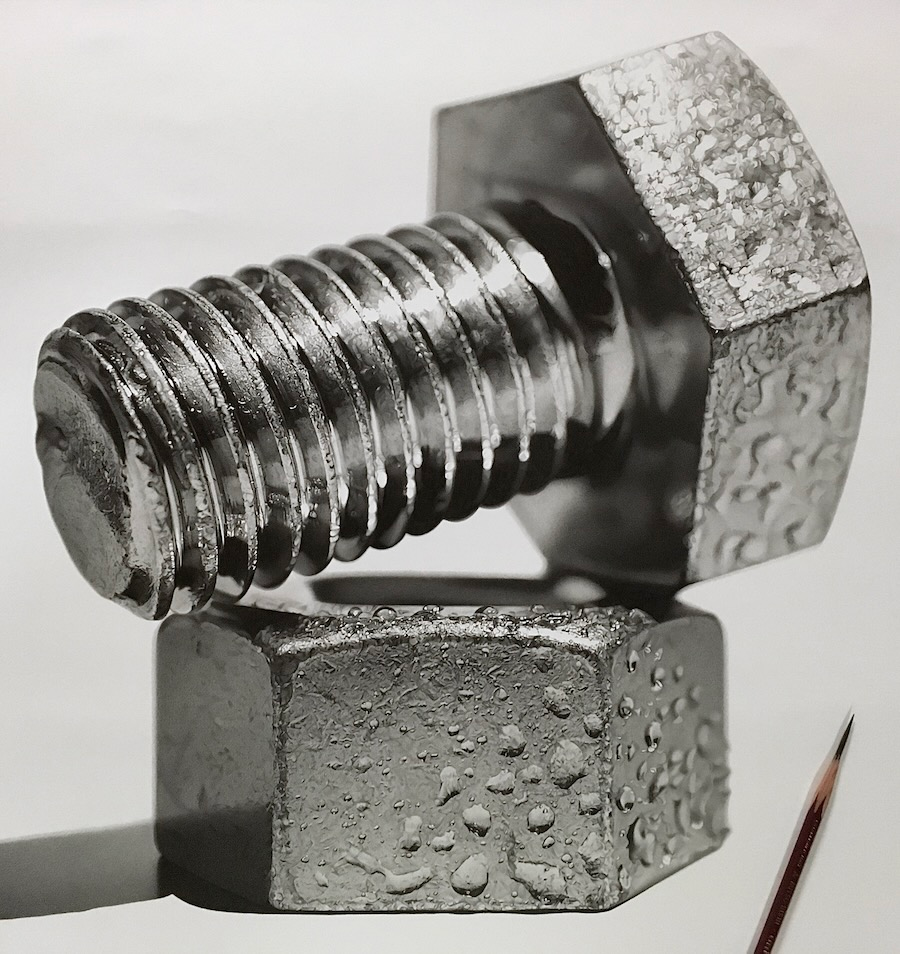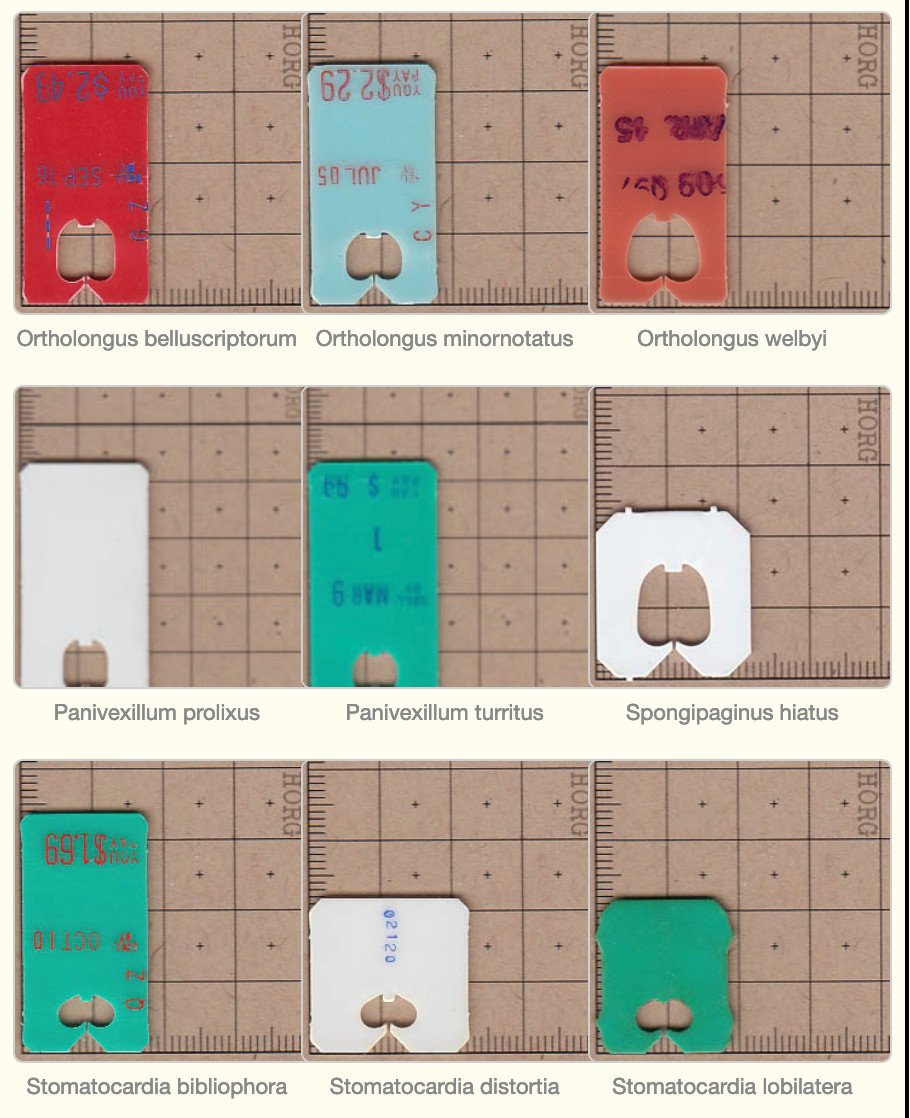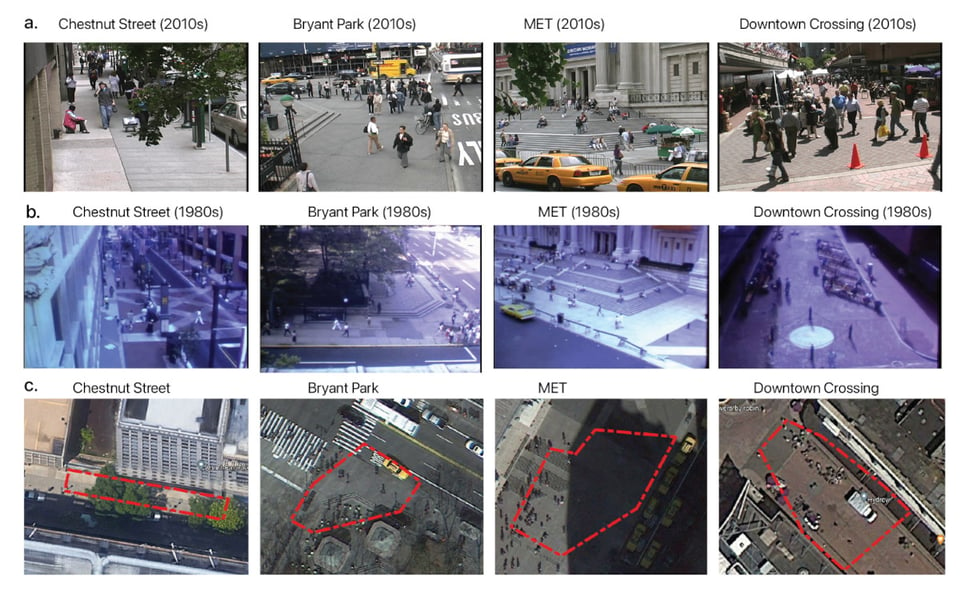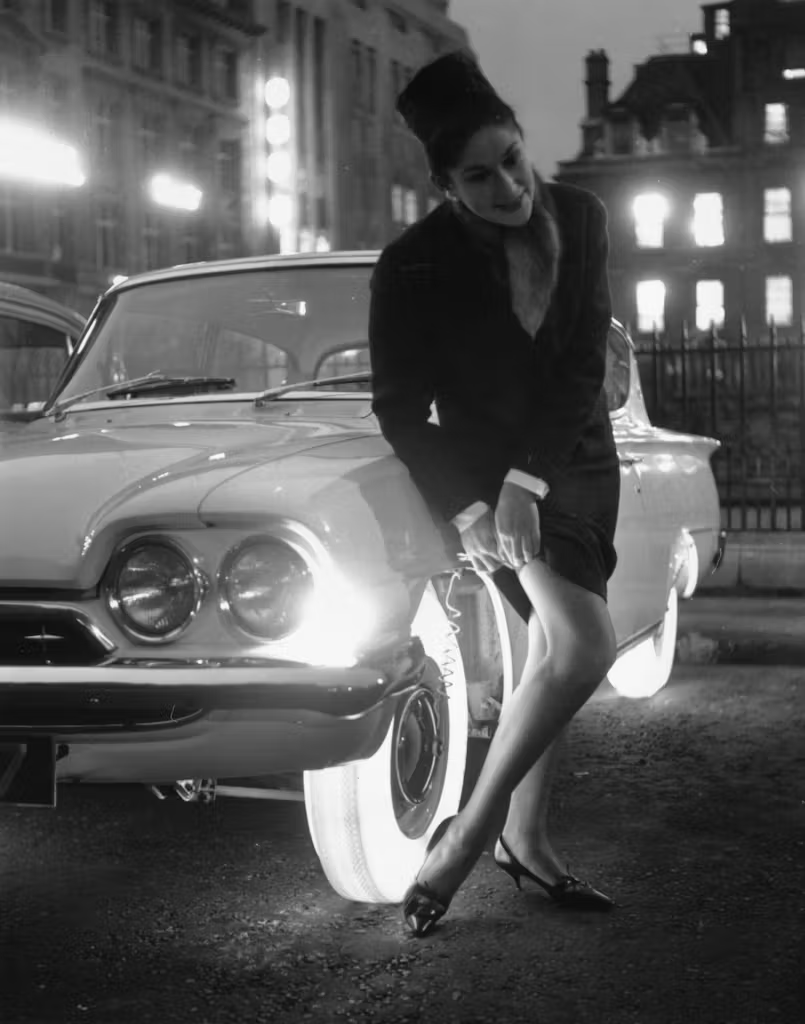Linkfest #28: Neolithic Octopuses, Weeping Trees, and a Forty-Year-Old Snowman
Hello!
It’s time for "the opposite of doomscrolling” — or, my latest “Linkfest”, in which I painstakingly debone the entire Internet to extract its finest cuts of science, culture and technology, just for you.
If you’re a subscriber, thank you! If not, you can sign up here — it’s a Guardian-style, pay-whatevs-you-want affair; the folks who kick in help keep it free for everyone else. And also — forward this email to anyone you know who’d like it!
Let’s begin ...
1) 🔩 Hyperrealistic pencil drawings of metal images

That image above looks like a photo — or maybe something digitally generated. But the artist Kohei Ohmori did it entirely by hand, using a pencil. It took 280 hours.
He’s done a whole series of these hyper-real metallic-object pieces, including a fork and spoon, a can of beer, a faucet and a Casio G-Shock wristwatch. Spoon & Tamago has a short piece on Ohomori with a gallery of images; they’re astonishing.
Ohmori credits his struggle with OCD for how he’s able to keep such epic focus for so many hours:
Kohei Ohmori developed an affinity for drawing at a young age. And—pun intended—drawn to the shiny luster of metallic objects, soon developed an uncanny ability to recreate them on paper using just a pencil. However, academically Ohmori struggled. His above-normal levels of concentration and focus made it difficult to juggle multiple assignments and he ended up dropping out of traditional high school and obtaining his diploma online. He also attempted a higher learning degree in art but soon dropped out as well. But he continued to channel his concentration into his drawings.
You can see more of his stuff at his Instagram feed or his web site, where he sells prints.
2) 🍞 Taxonomy of bread clips

You know bread clips? Those little plastic thingies that fasten the end of a bread bag?
For years now (I think it started around 2001) there’s been a web site that offers an exhaustive — and quite hilarious — faux-scientific taxonomy of the different types of bread clips. Apparently there are many varieties around the globe? So they’ve got pix of each major shape and its minor variations.
These are some examples of the “haplognathidae” variant …

The tongue-in-cheek conceit is that the clips are a parasitic life form — “Occlupanids” — that deserve their own Linnean taxonomy:
Occlupanids are generally found as parasitoids on bagged pastries in supermarkets, hardware stores, and other large commercial establishments. Their fascinating and complex life cycle is unfortunately severely under-researched. [snip]
Their stunning diversity and mysterious habits have entranced many a respectable scientist into studying, collecting, and cataloging specimens late into the night.
Damn. This is the sort of high weirdness for which I turn, and turn again, to the Internet. You really gotta click through all the taxonomic variants on the right-hand menu bar of that site; these people are … thorough. Quite apart from the scientific joke, it’s intriguing to see how many different types of bread clips exist!
Oh and if you want more there’s an active Occlupanid subreddit where people post photos of bread clips they’ve spotted in the wild; and also t-shirts for Holotypic Occlupanid Research Group. The perfect last-minute holiday gift, right?
(A tip of the hat to Laura Camacho for alerting me to this site!)
3) 🚶 US citydwellers are walking 15% faster than they did back in 1980

Here’s a fascinating study: A group of researchers acquired video of pedestrians walking around in four US urban spaces, with the videos taken forty years apart — the first bunch in 1979-80, and the next in 2008-2010.
Then they used visual-recognition software to analyze patterns of movement. Their findings?
Apparently, people are now walking faster: They’re fully 15% faster in the most recent videos compared to the early ones. They also do less lingering; back in 1980, 43% of the people were more or less hanging out in the locations, but by 2010 this had dropped to 26%. People also became more likely to walk alone, and less likely to meet up with groups of others.
What’s going on?
It seems like today’s urbandwellers are less likely to see streets as civic gathering places — and more just as “routes that get you from point A to point B”. This isn’t a massive shift; there was still plenty of street socializing going on in the modern data set. But the change is noticeable.
The academics don’t offer any explanations as to why this is happening. As they note, street-life is hella complex, and there are many factors that could be affecting this: Patterns of work, smartphones, secular trends in friendship, etc.
One thing that doesn’t seem to be an effect is crime. As Tyler Cowen notes …
The biggest change in behavior was that lingering fell dramatically. The amount of time spent just hanging out dropped by about half across the measured locations. Note that this was seen in places where crime rates have fallen, so this trend was unlikely to have resulted from fear of being mugged. Instead, Americans just don’t use public spaces as they used to. These places now tend to be for moving through, to get somewhere, rather than for enjoying life or hoping to meet other people. There was especially a shift at Boston’s Downtown Crossing. In 1980, 54% of the people there were lingering, whereas by 2010 that had fallen to 14%.
The full study is here. This is really interesting food for thought.
4) ⛄ A forty-year-old snowman

Back in 1987, a German thermal power station in Saarbrücken commissioned the artists Peter Fischli and David Weiss to create a “never-melting snowman”. It would live inside a refrigerator that would be powered by excess energy syphoned off the power plant.
The duo duly created one, and it has been living inside that frozen box for almost forty years now.
As Tim Brinkhof writes in Artnet …
One interpretation of the work the artists have repeatedly rejected is the notion that Snowman is an ecological statement. “It was a commissioned piece,” said Fischli, quoted in the New Yorker. “They were looking for a piece for in front of a power plant. We decided it had to be something that was dependent on the power of the power plant. The snowman may be a metaphor for our climate crisis, but it’s running on electricity, so it’s a contradiction.”
He added that, if the piece is about anything, it’s “taking care of something and protecting it… and being dependent on something. Someone else has to take care of him.”
5) ⌨️ The Bennett portable typewriter of 1910

This machine was, as Messy Nessy puts it, the “Ipad” of typing back in the early 20th century.
It was tiny and pocketable — and gorgeously engineered — but apparently not much fun to type on:
The keys are much too close together which causes the typist to regularly press the wrong key and after extended typing the wrists would begin to hurt. Interestingly, when any one key in any tier is pressed, all the keys under it will depress as well. For example, press the q and the a & z keys also depress, press the i and the k & n will also depress. Pressing the awkwardly positioned space bar will depress the t, y, g & h keys. too. If one could type quickly with this machine, the Blickensderfer-like typewheel would probably never jam so that's a plus.
More photos here and here, and a scan of the original Bennett owner’s manual.
It reminds me of the modern Gemini PDA clamshell computers, themselves a linnean descendent of the Psion palmtops of the 90s. As with the Bennett, not a great typing experience, but damn you’ve got a full computer in your pocket!
6) 🔋 Powering an ebike with 130 disposable vape batteries

Chris Doel is a hardware hacker who got interested in disposable vapes. Many brands contain lithium-ion batteries, which are rechargeable. But these brands aren’t designed to be recharged; they have no mini-USB port. So once the battery dies, the entire vape is tossed out.
This struck Doel as incredibly wasteful, so he decided to illustrate it in a clever way — by taking apart 130 disposable vapes and using their batteries to power his ebike.
His video is incredibly entertaining and super educational! He disassembles the vapes and shows that the majority of the ‘lil lithium-ion cells are still in excellent shape. These cells are, he notes, pretty much the same as those used in electric cars or regular electric-bike batteries: When you buy a new EV, the battery is made from, well, thousands of these little cells all stacked together into big bricks. Same with an ebike battery.
So Doel essentially creates a new ebike battery by stacking the 130 vape cells together. He attaches a “battery management system” (BMS) too — a little chipset that monitors each individual cell to make sure it’s not in danger of overloading and catching fire. (As he notes, all those ebike battery-fires you’ve heard about? They’re usually from cheap off-brand ebike batteries where the manufacturer cheaped out and didn’t include a BMS.)
When he’s done, he attaches it to his ebike and … zoom! It works!
In fact, the battery lets him ride for 33 km without pedaling at all. He could have gone 50 km with “pedal assist”. (He could also have made a bigger overall battery; his is, by ebike standards, fairly small.)
As he concludes …
So there we have it. These “disposable” cells are actually really capable and valuable. Why they hell are they being thrown away after one use?
It’s a great question! What could we do if we actually reused all these lithium-ion batteries we’re throwing out after a single use?
As Kevin Purdy calculates at Ars Technica …
The US Public Interest Research Group estimates 11.9 million disposable vapes were sold in the US in March 2023. Because liquid nicotine is classified by the EPA as a hazardous waste, e-waste recycling is mostly impossible. And because the devices contain lithium-ion batteries, they cannot easily be otherwise recycled, including for Drug Enforcement Agency buybacks. US PIRG suggests the lithium contained in each year's wasted vapes in the US is about 23.6 tons, or enough for 2,600 electric vehicles.
This is an ur-lesson as we lurch towards a world of renewables, right? This stuff is technology; we can recycle it, reuse it. If we put in place some smart rules that require recycling of batteries, we’d have a lot more to go around.
7) 🐙 Neolithic octopuses and the Silurian hypothesis

The “Silurian Hypothesis” is a fun thought experiment.
It posits Earth may have had advanced civilizations in the deep past that we are, today, unaware of. Why wouldn’t we know about them? Because if they existed millions of years ago and died out, their architecture would be long gone. “No ruins of ancient football stadiums, highways or housing projects would survive geological time,” as the theory goes.
So, cool idea! (I first learned of it from a 2018 from The Atlantic.)
But now the marine-biology blogger Pacific Klaus has taken it up a notch, by posing the question:
If an advanced civilization happened in the deep past, from which species might it have arisen?
His answer: Cephalopods.
As he notes, they’re intelligent (complexly so; they appear to have a theory of mind) and they use tools with panache. So he figures it’s not impossible they could have reached a Neolithic level of civilization: Agriculture, settlements, advanced tools, trade. As he writes …
Since almost all cephalopods are carnivores, they would have been some kind of pastoralists, raising snails or clams for their consumption. This level of technological achievement is not likely, and certainly not supported by any actual evidence; however, it’s mildly realistic. The step from an octopus bringing along a coconut shell for protection to an octopus picking up snails and placing them near his lair for farming is at least feasible. The same octopus using stone tools to smash these snails is conceivable. Cephalopods living in structured societies? Squids already live in schools with strict hierarchies, with the bigger animals frequently cannibalizing the smaller ones.
Now, cephalopod civilization almost certainly wouldn’t have progressed much further technologically. It’d be hard for octopuses to master chemistry and electricity, because that stuff doesn’t work well underwater. But Neolithic octopuses? “Maaaaybe.”
There’s one last question to consider. When would this cephalopodic society have arisen, and fallen?
Klaus figures it would have had to happen before fish evolved, because they eat cephalopods …
A crucial window where cephalopod civilization could have occurred is the time between when mentally high-performing cephalopods came to their own, and the time when aquatic vertebrates really took over.
So “the cephalopod civilization window” is from the beginning of the Triassic and lasts for 55 million years, when fish come along. That’s a nice long period for a complex Neolithic civilization to emerge — and then vanish, leaving not a trace.
Klaus’ essay is long, but utterly delightful: Give the whole thing a read!
8) 🎲 Random-number-generator watch

I dig LCD watches that, on top of time-telling, carry some sort of extra computational resources. They’re not full-on smartwatches, but they have some weird advanced abilities.
Here’s a great example of this genre — the “D20 Black Resin”, which generates random numbers in quanta useful for tabletop gaming:
In addition to telling the time, it lets you roll a virtual 4, 6, 8, 10, 12, or 20-sided die with the push of a button, and displays critical success and critical failure icons on D20 rolls of 20 or 1.
It also features an Advanced Combat Mode where you can roll a D100, roll up to 12 dice at once, and even roll with advantage or disadvantage on a D20.
It’d make a good holiday gift for the tabletopping nerd in your life, but alas doesn’t ship until January 2025.
9) 🛞 Goodyear’s glowing tires

In 1961, Goodyear chemists invented a glowing tire. It was made of “Neothane”, a synthetic polyurethane rubber that was as resilient as rubber but clear and see-through like plastic.
That meant they could dye the tires a color, mount bulbs inside, and le voila — a car riding on shimmering wheels of light.
That cheesecakey promo shoot above, which appeared in Life magazine, is apiece with the overoxygenated press releases Goodyear issued, in which they predicted that women would buy tires to accessorize their oufits …
“Once the tires reach the market—and that could happen in a few years—auto stylists may use them to carry out a car’s color scheme, perhaps matching the tires with the upholstery,” Goodyear predicted in a 1961 press release. “And it’s not at all unlikely that milady will want tires that enhance her wardrobe, her hair, or even her eyes. Imagine, if you will, one girl telling another: ‘But, my dear, green tires just don’t do a thing for your complexion.’ When that day comes, it will mean a whole new frontier for the tire designer.”
In reality, the tires were totally impractical. They weighed 150 pounds each and, due to a lower melting point than regular rubber tires, eroded quickly during regular braking. They never really sold.
A few are still in existence, I guess, because recently an antique-car enthusiast got their hands on a set for the restoration of a 1958 Golden Sahara.
10) ☹️ The power of “defensive pessimism”

When it comes to tackling climate change, traditional psychological theory would suggest that pessimism is bad — because it demotivates. If you want legions of people to really push for climate action, you want optimism, right?
Perhaps not, argues a fascinating essay by Katrina Miller in Undark. She dives into new experiments and psychological research that suggest what’s actually powerful is “defensive pessimism”:
Interestingly, a recent survey of more than 2,000 U.S. adults found that people experiencing psychological distress related to climate change were more likely to engage in collective climate change action or to report a willingness to do so. And other research has found a positive correlation between climate anxiety and climate action. While anxiety or distress are not exactly the same as doubt or pessimism, they’re similarly believed to cause people to shut down, when in fact they may be a helpful driver of action. “The people that I know who are really seriously working on these issues and who are engaging in climate change activism,” Bloodhart said, stressing that this is her personal observation, “they have a little bit of hope, but they mostly are pretty pessimistic and concerned.”
Some light may come from psychological research on so-called defensive pessimists. While run-of-the-mill pessimists might become immobilized and despondent by focusing on negative outcomes, defensive pessimists take action to avoid them. “They use their worry and their anxiety about that worst possible outcome to drive them to take action so that it never becomes a reality,” said social and health psychology researcher Fuschia Sirois of Durham University. In one 2008 experiment, for example, defensive pessimists performed relatively poorly in a word puzzle when prompted to imagine a positive scenario, but they did much better, on average, when they were prompted to imagine the opposite, negative effect.
In another study that tracked university students for over four years, researchers found that defensive pessimists had higher self-esteem compared to other students with anxiety, and even eventually reached nearly similar levels of confidence as optimists. Research comparing optimists and defensive pessimists has often found similar benefits, although pessimists tend to have a less enjoyable journey towards achieving outcomes, Sirois added.
That’s just a taste of the piece — check the whole thing out!
11) 🦋 When plants weep, moths avoid them

Okay, saying that the plants “weep” is a bit of poetic license here.
But the gist of it is correct! A group of scientists just experimentally demonstrated something extremely cool: Moths listen to the ultrasonic sounds that plants emit, and if the moths hear a plant undergoing physical distress, they avoid using it for a nest.
Scientists have known for years that when plants are under distress (being dehydrated, for example) they make ultrasonic clicking sounds. These clicks are pitched so high that humans can’t hear them.
But moths can! They have ultrasonic hearing. So the scientists wondered: Do the moths listen to plants, notice if they’re emitting sounds of torment, and avoid them?
Apparently so. They demonstrated this in a very cool experiment, as Gennaro Tomma reports in The New York Times (gift link) …
… the moths were presented with a hydrated tomato plant on one side of an experimental arena. On the other side was another tomato plant that was healthy and hydrated, but that emitted recorded sounds of distress from a dehydrated tomato plant. The moths, they found, strongly preferred to lay their eggs on the “silent” plant. Dr. Seltzer said that the females not only recognize that these signals indicate the presence of a plant, but also that the moths used the clicks to interpret the state of the plant producing them.
Oh, and, this raises a fascinating additional question about moths. It has long been assumed that moths evolved the ability to hear ultrasonic frequencies as a defensive measure against bats, their predators. (Because bats emit ultrasonic sounds during echolocation.)
But moths emerged 200 million years before bats. So maybe moths initially developed their ultrasonic hearing so that they could listen to plants? And only later on found it was additionally useful for avoiding predators?
Plant bioacoustics: A crazily cool area of research. The paper itself is here; it’s not yet peer-approved.
12) 🤕 How placentas are healing untreatable wounds

In the New York Times (gift link), Kate Morgan investigates how doctors are using placenta tissue to heal wounds that otherwise seem untreatable. They’re being used as grafts that reduce pain and inflammation, prevent scar tissue, treat chronic wounds and even heal vision — with stunning results.
They’re particularly useful in healing serious third-degree burns; the story’s opening anecdote is wild …
In the aftermath of a propane explosion at her mother’s house in Savannah, Ga., in 2021, Ms. Townsend spent more than six weeks in an induced coma in a burn trauma unit. She had second- and third-degree burns over most of her body, and her face had become unrecognizable.
Searching for a way to help her, surgeons turned to a rarely utilized tool: human placenta. They carefully applied a thin layer of the donated organ to her face, which Ms. Townsend said was “the best thing they could have done, ever.” She still has scars from grafts elsewhere on her body, but the 47-year-old’s face, she said, “looks exactly like it did before.”
The photos of Townsend in the piece are wild; I would never in a million years believe her face had been so traumatically burned.
Optometrists are using them too …
In a patient whose eyes were burned after a bottle of bleach toppled off a shelf, she said, grafts “helped to regenerate that cornea rapidly.” Another patient, who got an ulcer after sleeping with contact lenses in, healed quickly after a placental graft. “It almost didn’t look like it happened at all,” Dr. Tsai said. “The cornea was pristine.”
Why do placental grafts work such magic? It’s not totally clear, but the doctors here describe these amniotic grafts as doing a “histological reboot” of even the most damaged tissue; they seem to “change the nature of the wound”, another adds.
Apparently placentas were used therapeutically for over a century or more, but the AIDS epidemic really crushed the use in the US. Judging by these phenomenal results, I’d say it’s time to bring it back. There are 3.5 million placentas delivered in the US every year, and most are disposed of. If donation could become more routine, it could have a huge impact on the treatment of otherwise-untreatable wounds.
13) 🏠 Building houses out of straw

In Fast Company, Patrick Sisson reports on an intriguing new trend in construction: Using straw to fabricate the walls in new buildings. There’s a Slovakian startup that is making prefab panels with compressed straw, and a designer in Denmark and Sweden are using it to build schools and apartment buildings.
Apparently straw has a couple of advantages, chiefly that it’s incredibly cheap and easy to work with …
“Literally, you put in straws, plywood, and a pack of screws on one end, and then on the other end, you have the finished product,” says Peter Jensen, a representative for EcoCocon in the U.S., about his firm’s new factory. “You don’t have any people involved in between.”
… and it’s a hell of an insulator …
In addition to incredible insulating power, straw also deadens outside sound, creating a much quieter indoor environment. Bassett-Dilley says that even in a cold climate like Chicago’s, if the power goes out in the middle of winter, the indoors stays about 40 degrees Fahrenheit.
To put a cherry on this sundae, the emissions from making straw panels is an estimated 80% lower than making regular walls for buildings. And hey, when the building reaches the end of its life? You compost the straw.
The one thing I wondered about was fire risk. Straw seems awfully … burnable, right? But apparently a study of compressed straw found that it’s slightly less flammable than regular insulation.
Insert obligatory “three little pigs” joke here.
14) 👔 Corporate jargon generator

I am alternately annoyed by corporate jargon and entranced by it — it’s so studiously and inventively drained of serious meaning that it feels like a grand literary project, something cooked up by the Situationists back in the 60s.
Either way, these little doodads would make fun fidget toys while you’re stuck in a 17-hour meeting.
15) 🛒 A final, sudden-death round of reading material
Rawdogging Ulysses. 🛒 America’s most common dreams. 🛒 “LLMs make you think like a manager.” 🛒 Paid climate leave. 🛒 Blood-sweating horses of mythology. 🛒 The kilometer-high cliff on Comet Churyumov. 🛒 Atari joystick booze decanters. 🛒 The giant pink slugs of Australia. 🛒 Korean mudle crayons. 🛒 Groovy infinite highway in HTML/JS/CSS. 🛒 Scroll-speed detector. 🛒 Radio bursts from space have a “sad trombone” effect. 🛒 A vibrating pill to make your stomach feel full. 🛒 Hezin O’s glitchy grid art. 🛒 A 1901 analysis of telegraph style. 🛒 AI-powered punching bag. 🛒 The new Orchid synthesizer looks extremely cool. 🛒 The intellectual and rhetorical style of the rationalist blogosphere. 🛒 “Watery quads”. 🛒 Motorized perambulators of the 1920s. 🛒 Conan the Bacterium. 🛒 What did music in ancient Greece sound like? 🛒 They’re hiring annotators for ancient papyrus, up to $40/hr. 🛒 A cardboard cathedral. 🛒 Virginia Postrel ponders what happened to the idea of technological progress. 🛒 The abstract paper scenes of Felipe Enger. 🛒 Most of Australia’s first-nations languages don’t have gendered pronouns. 🛒 DIY thermoelectric ice blaster. 🛒 Massive impromptu Chinese-student long-distance bike rides. 🛒 They figured out what caused Perseverance to crash. 🛒 Trippy CSS animation. 🛒 Volcano sharks.
CODA ON SOURCING: I read a ton of blogs and sites every week to find this material. A few I relied on this week include The Awesomer, Numlock News, Hackaday, Messy Nessy Chic, and Mathew Ingram’s “When The Going Get Weird”; check ‘em out!